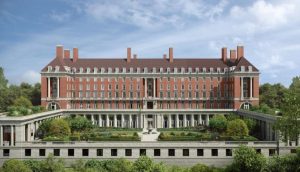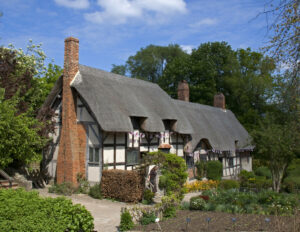From charming stone farmhouses and Tudor townhouses to historic theatres and palaces, listed buildings represent a deep connection to our shared past. While few of us are likely to buy an actual palace, there are thousands of Grade 2 listed buildings for sale across England. However, along with their unique architecture and beautiful period features, these buildings bring with them a few things to consider before you buy.
What does Grade 2 listed mean?
Listed buildings are considered of special historical or cultural interest, with Grade 2 being the most common type. Under the Planning Act of 1990, listing buildings is designed to help the UK hold on to its architectural heritage.
What are the different grades of listed building?
There are three different types of listed building: Grade 1, Grade 2* and Grade 2. In England alone, there are between 400,000 and 500,000 listed buildings recorded under the National Heritage List for England (NHLE). Of these:
- Around 2.5% are classified as Grade 1 – buildings of exceptional interest.
- 5.8% are Grade 2* – particularly important buildings of more than special interest.
- More than 90% are Grade 2 – these are buildings of special interest.
Can you live in a Grade 2 listed building?
You absolutely can live in a Grade 2 listed building. In fact, around 92% of all Grade 2 listed buildings in the UK serve as homes for their owners.
What do I need to know before buying a Grade 2 listed building?
Before buying a Grade 2 listed building you need to understand the potential for additional costs when it comes to maintenance and renovation. Grand, historic buildings can be difficult and expensive to fix when something goes wrong. You may need specialist materials, tools and expertise to sort the issue without compromising on the historic integrity of the building.
Just as important, before you can make any major changes to the property you will probably need specialist advice and relevant planning permission. You will also need to consider the insurance implications of owning a listed building (more on that below).

Can you alter a Grade 2 listed building?
In theory, you can make even significant changes to a Grade 2 listed building. However, be advised that you have to obtain Listed Buildings Consent (LBC) from your relevant local authorities first.
This is to make sure that your planned changes will protect the historical or cultural value of the property. The kind of works that are generally counted as ‘significant’ include:
- Building an extension
- Exposing timbers and brickwork
- Removing period features such as fireplaces and panelling
- Demolishing and/or reworking existing features
- Installing double glazing
In all cases, it’s best to ask your local council for advice before any work starts. That way, you can be sure that you won’t get caught out. Historic England offers a more detailed guide on what you can and cannot do with a listed building.
Read more
Can I put a new kitchen in a Grade 2 listed building?
You can theoretically put a new kitchen in a Grade 2 listed building. Provided that you get Listed Buildings Consent and are not removing any period features.
Can you put in a new bathroom in a Grade 2 listed building?
Unless you’re planning to change structural works or alter the size of the room, then yes. You shouldn’t need permission to change the fittings and sanitaryware (as long as they aren’t historic). However, if you’re fitting a bathroom where there wasn’t one before, Listing Building Consent may be required. You may also need consent to install new pipes or anything that affects the building’s original features.
Can you paint beams in a Grade 2 listed house?
You may be allowed to strip or paint beams in a Grade 2 listed house. But, as they form part of the fabric of the property, it’s wise to apply for Listing Building Consent.
Can you change the garden of a Grade 2 listed building?
While you can change the garden of a Grade 2 listed building in theory, you might have to apply for consent. This is especially the case if you’re altering the set structure of the garden, such as historic walls, gates, paths and trees.
Can you get a mortgage on a Grade 2 listed building?
Not all lenders offer mortgages on Grade 2 listed buildings. Your best bet is to speak to a mortgage adviser, who can search a range of specialist providers to find a suitable match. However, you may need a deposit of 25–30% rather than the standard 10%. Before you attempt to get a mortgage on a property, however, you must find out if it can be insured.
Can you knock down internal walls in a Grade 2 listed building?
You may be able to knock down internal walls within a Grade 2 listed building, provided that they don’t contain period features. Such features include things like period-specific wood panelling, brickwork, timbers, etc.
What can you do to a listed building without consent?
For most Grade 2 buildings, many smaller works such as interior painting or making repairs with like-for-like materials won’t need prior consent. Even so, there are some regulatory grey areas even for small jobs on listed buildings. Again, it is always worth checking in with local authorities before launching any renovations.
What can’t you do to a Grade 2 listed building?
Again, you can’t make any significant changes to the property at all without Listed Buildings Consent. This is to dissuade homeowners from removing or altering features of the property that are of historical interest and value. If your Grade 2 listed building contains rare and highly specific period features, it may be impossible to attain LBC to remove or alter them.
What are the penalties for altering a listed building without consent?
The maximum penalty for renovating a listed building without consent is two years’ imprisonment or an unlimited fine. While this is the ‘technical’ legal provision, minor fines are more the norm. However, judges have been known to sentence jail time and fines of up to £20,000 for serious offences.

Is it more expensive to insure a Grade 2 listed building?
It is often more expensive to insure listed buildings simply because of the higher costs of renovating them. Fortunately, plenty of insurers offer specialised policies for listed buildings.
While these tend to be more expensive, they cover the costs of specialist expertise and the use of like-for-like materials. On the flip side, the costs of under-insuring a listed building (i.e. not taking out a policy with sufficient cover) can be overwhelming. This is particularly relevant if you suddenly have to foot the bill for fully restoring or rebuilding a house that is several hundred years old!
Can a listed building become unlisted?
It is possible to have a building ‘delisted’ but be warned that it is not an easy process. Typically, around half of all applications are denied and you have to prove your case with supporting evidence that your building doesn’t meet the necessary criteria.
Successful applications usually involve buildings that have been destroyed or seriously damaged to the point where they no longer hold the same historical or cultural value.
What are the pitfalls of buying a listed building?
The main pitfall of buying a listed building is that you may need specialist insurance cover. This can be pricey and restrictive. Additionally, getting consent for any work can be a time-consuming process. Such work also carries additional costs as you will likely need to employ professionals with specialist knowledge and skills.
Put simply, owning any kind of listed building probably means carrying additional costs and paperwork. This goes along with a reduced amount of freedom in terms of what you can do with your own home.
Is it worth buying a listed building?
Buying and owning a listed building often comes with added costs. However, with planning, these can be anticipated.
The main drawback of owning a listed property for many people is the attached restrictions on renovations and changes. If you want a no-hassle, easily manageable blank canvas for a home, then a listed building isn’t for you.
However, if you find a Grade 2 manor house and fall in love with it, then a little prior preparation can help make that dream come true. Just remember to always ask your local authorities for advice before making any changes to your home. And never scrimp on the insurance cover!
2024 Update: Government announces proposals for renovating historic buildings
In January 2024, the UK Government announced plans to remove some of the barriers to renovating historic and listed buildings. The proposals are mainly related to retrofitting listed buildings with more energy-efficient equipment such as boilers, double glazing and other equipment. This could make it cheaper and easier to make a historic home more energy-efficient, as well as bringing down the cost of energy bills.
You can read more about the government’s proposals here.
HomeViews provides verified resident reviews of the UK’s housing developments. We’re working with developers, landlords and the Government to recognise high performers and help to improve standards in the built environment.



















